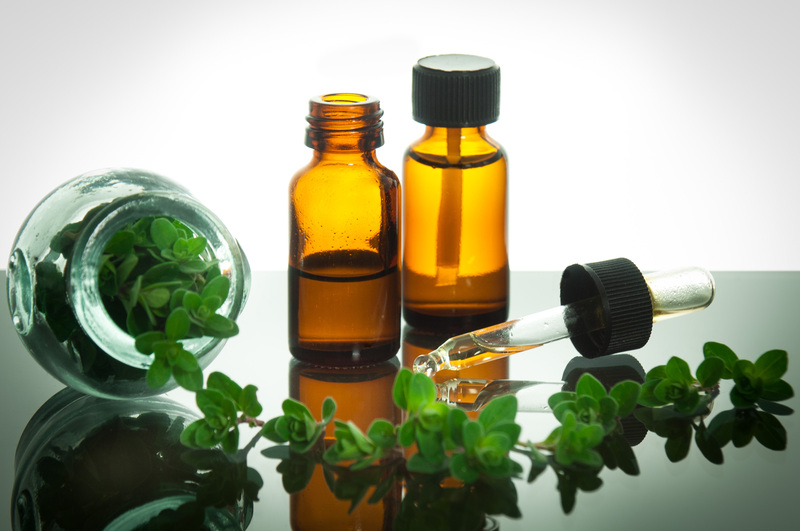Efficient Bathroom Cleaning: Best Tips
Posted on 09/10/2024
Cleaning the bathroom is often seen as one of the least favorite household chores. It's a space that demands frequent attention due to its humid environment, which can become a breeding ground for bacteria, mold, and mildew. However, a clean bathroom is crucial for maintaining a healthy home. With an efficient cleaning regimen, you can keep your bathroom sparkling clean without spending hours scrubbing away. In this article, we'll explore some of the best tips for efficient bathroom cleaning.
1. Gather Your Supplies
Before you begin, make sure you have all the necessary cleaning supplies. This will save you time and ensure you can focus on the task at hand. Essential items include:
- All-purpose cleaner
- Disinfectant spray
- Glass cleaner
- Toilet bowl cleaner
- Tile and grout cleaner
- Sponges and scrub brushes
- Microfiber cloths
- Rubber gloves
- Mop and bucket
- Squeegee
Having everything ready will allow you to clean more efficiently and with fewer interruptions.

2. Start with Decluttering
Before you dive into the actual cleaning, remove any items that might be in the way. This includes toiletries, shower products, and any other personal items. Decluttering not only makes the cleaning process easier but also allows you to assess what you actually need in your bathroom and what can be discarded or stored elsewhere.
3. Work From Top to Bottom
Always clean from the top of the room to the bottom. This ensures that any dust or debris falls to surfaces that haven't yet been cleaned. Start with the ceiling, light fixtures, and top shelves, then gradually work your way down to the countertops, sinks, toilet, and floors.
4. Tackle the Shower and Bathtub
Showers and bathtubs are notorious for accumulating soap scum and hard water stains. Using a specialized tile and grout cleaner, spray the walls and floor of the shower. Allow the cleaner to sit for a few minutes, which will help break down soap scum and grime. Then scrub the surfaces using a stiff-bristled brush. Be sure to clean the showerhead by soaking it in a mixture of vinegar and water to remove any mineral buildup. Rinse everything thoroughly to remove any residue.
5. Clean the Toilet Thoroughly
The toilet is one of the most critical areas that need to be cleaned regularly. Apply a toilet bowl cleaner around the inside of the bowl, ensuring you get under the rim. Allow it to sit while you clean the rest of the toilet. Use a disinfectant spray to wipe down the exterior of the toilet, including the lid, seat, and tank. Finally, scrub the inside of the bowl with a toilet brush, then flush to rinse away the cleaner.
6. Wipe Down Surfaces
Next, focus on the bathroom countertops, sinks, and faucets. An all-purpose cleaner is typically sufficient for these surfaces. Spray the cleaner on the surfaces and wipe them down with a microfiber cloth. Pay special attention to any soap dishes or toothbrush holders, as these can harbor mold and bacteria. For mirrors and glass surfaces, use a glass cleaner and a lint-free cloth or paper towel to ensure a streak-free finish.
7. Clean Tile and Grout
Tile and grout can be particularly challenging to keep clean. For tile floors and walls, use a tile cleaner or a mixture of vinegar and water. Apply the cleaner and scrub the grout lines with a specialized grout brush or an old toothbrush. Rinse thoroughly to remove any cleaner residue. For stubborn grout stains, consider using a paste made from baking soda and water, which can be left on for a few minutes before scrubbing and rinsing.
8. Clean the Floors
Now it's time to tackle the floors. Start by sweeping or vacuuming to remove any loose debris. Then, mop the floors using a cleaner appropriate for your flooring type. For tile floors, a mixture of water and a few drops of dish soap works well. Ensure you wring out the mop thoroughly to avoid excess water, which can lead to mold and mildew. For vinyl or laminate flooring, use a cleaner recommended by the manufacturer to avoid any damage.
9. Disinfect High-Touch Areas
Even after a thorough cleaning, it's important to disinfect high-touch areas to eliminate any lingering germs. This includes light switches, doorknobs, and cabinet handles. Use a disinfectant spray or wipes, and allow the surfaces to air-dry for maximum effectiveness.
10. Maintain a Cleaning Routine
The key to an efficiently clean bathroom is regular maintenance. Establish a weekly cleaning routine to prevent the buildup of grime and bacteria. Daily habits can also make a big difference. For example, wiping down the shower walls with a squeegee after each use can prevent soap scum and water spots. Encourage family members to keep the bathroom tidy by putting away personal items and wiping down surfaces after use.
11. Use Natural Cleaners
For those who prefer to avoid harsh chemicals, there are many natural alternatives that can effectively clean your bathroom. For example, a mixture of vinegar and water can be used to clean mirrors and glass surfaces. Baking soda is excellent for scrubbing sinks and tubs. Lemon juice can help remove hard water stains and leave a fresh scent. These natural cleaners are not only effective but also safer for your family and the environment.
12. Invest in Quality Cleaning Tools
Using the right tools can make a significant difference in the efficiency of your cleaning routine. High-quality microfiber cloths are excellent for wiping down surfaces without leaving lint behind. A sturdy scrub brush can help you tackle tough stains, and an extendable duster can reach high corners and light fixtures. Investing in durable, effective cleaning tools will save you time and effort in the long run.
13. Don't Forget Ventilation
A well-ventilated bathroom is less prone to mold and mildew growth. Ensure your bathroom fan is working correctly, and use it during and after showers to reduce humidity. If you don't have a bathroom fan, consider opening a window or using a portable fan to improve air circulation. Regularly cleaning the fan vent will also ensure it operates efficiently.
14. Address Mold and Mildew Promptly
If you notice any mold or mildew in your bathroom, address it immediately to prevent it from spreading. Use a mixture of bleach and water or a commercial mold remover to clean affected areas. Ensure the bathroom is well-ventilated during and after the cleaning process to prevent mold from returning.

15. Keep Cleaning Solutions Handy
Having your cleaning supplies easily accessible can encourage more frequent touch-ups. Consider keeping a small caddy with essential cleaning supplies under the bathroom sink. This way, you can quickly address any spills or messes as they occur, maintaining a cleaner bathroom between deep cleans.
Conclusion
Efficient bathroom cleaning doesn't have to be a daunting task. With the right tools, strategies, and a regular cleaning routine, you can keep your bathroom spotless and hygienic without spending excessive time and effort. Remember to gather your supplies, declutter, and work from top to bottom for optimal efficiency. Incorporating natural cleaners and maintaining proper ventilation will further ensure your bathroom remains a healthy and pleasant space. With these tips, you can achieve a clean and refreshing bathroom with ease.
By adopting these best practices for efficient bathroom cleaning, you'll not only save time but also create a healthier environment for you and your family. Happy cleaning!



